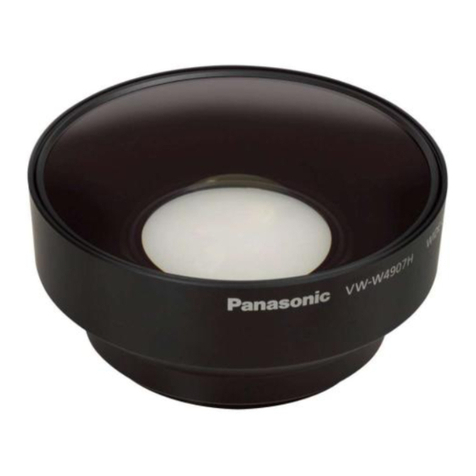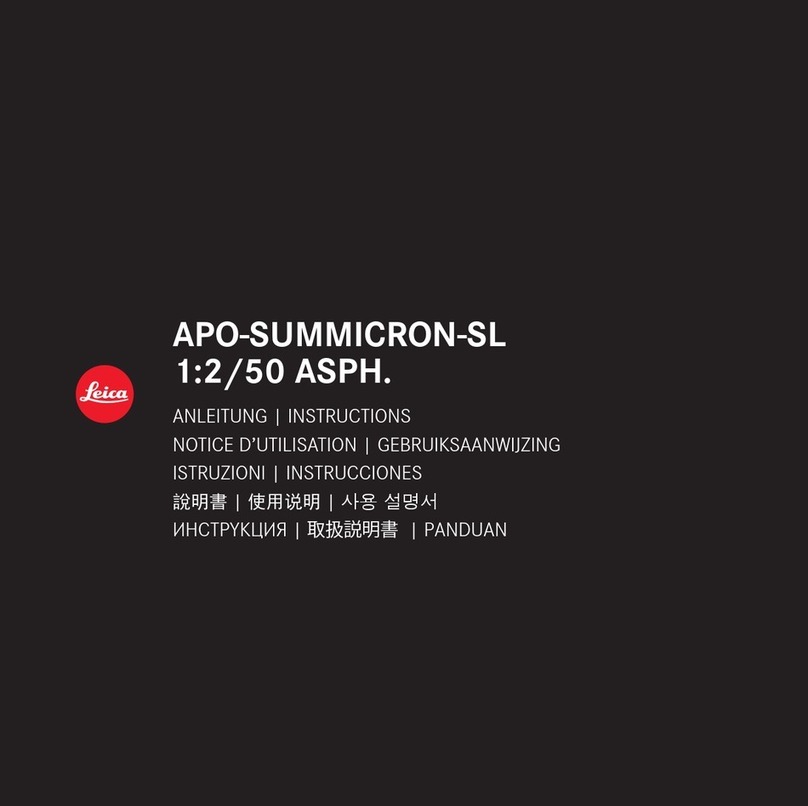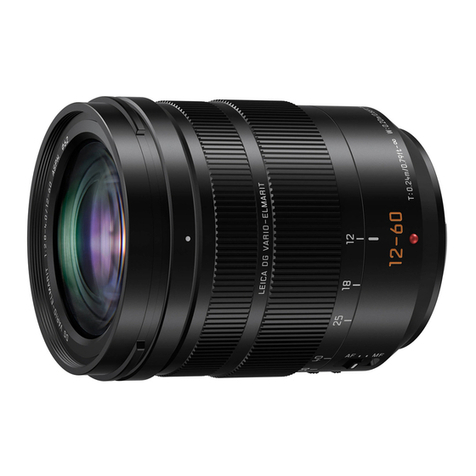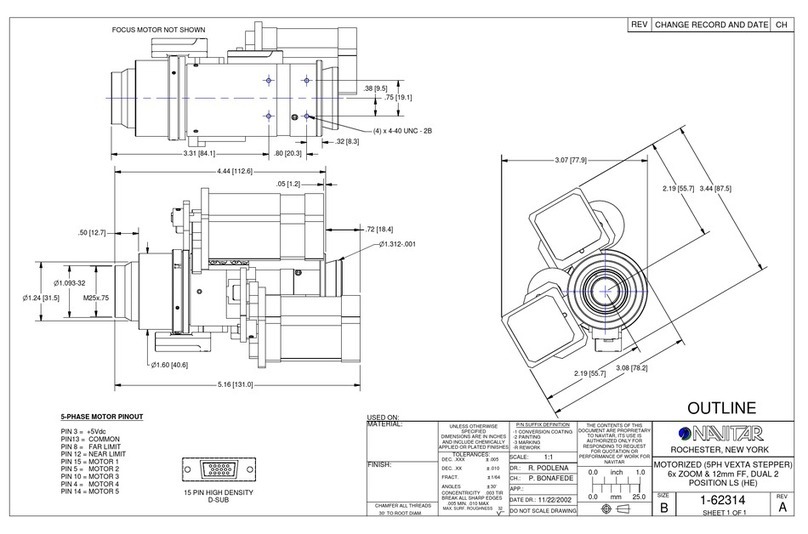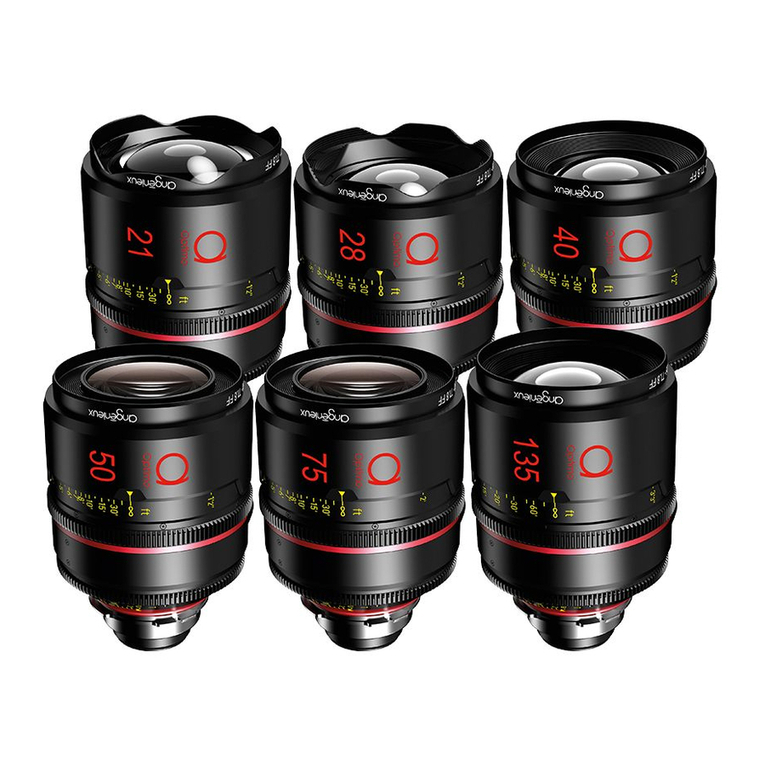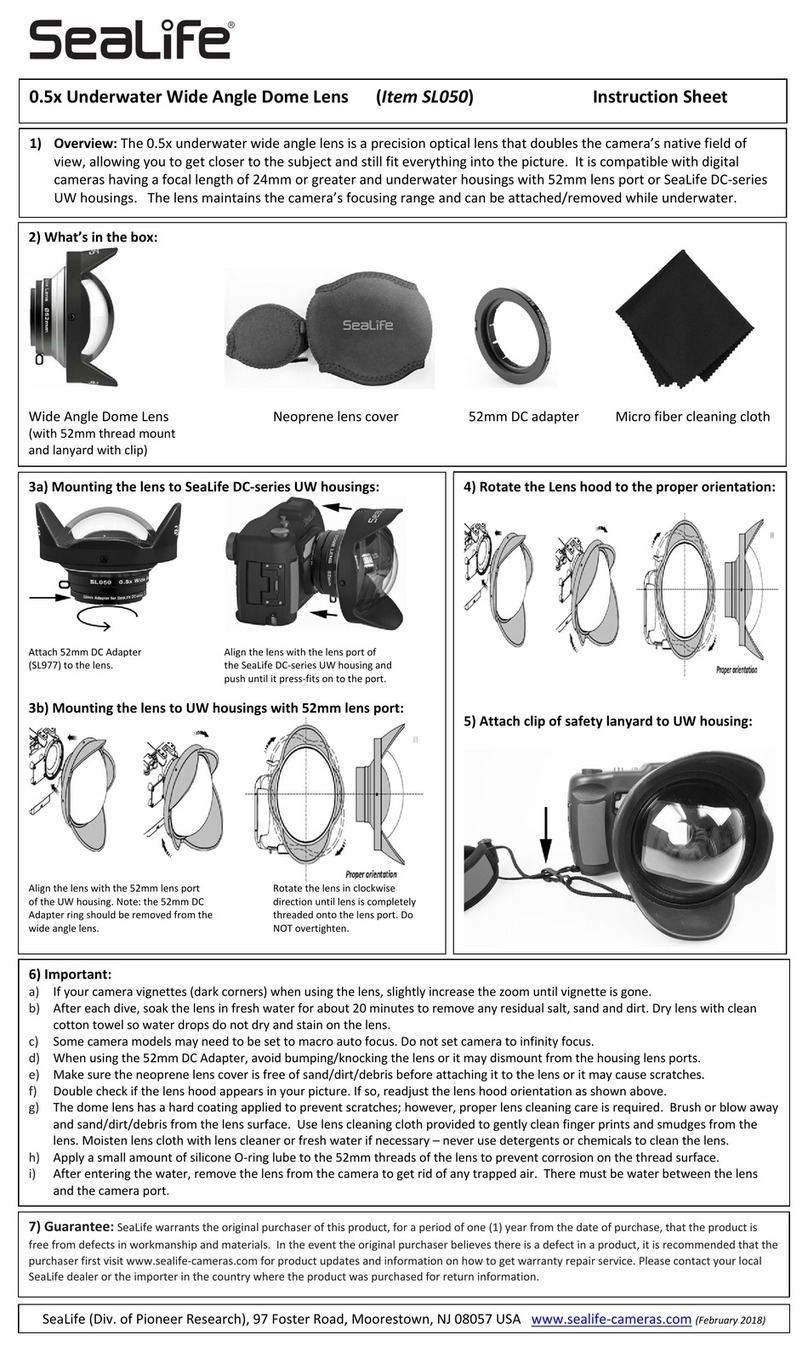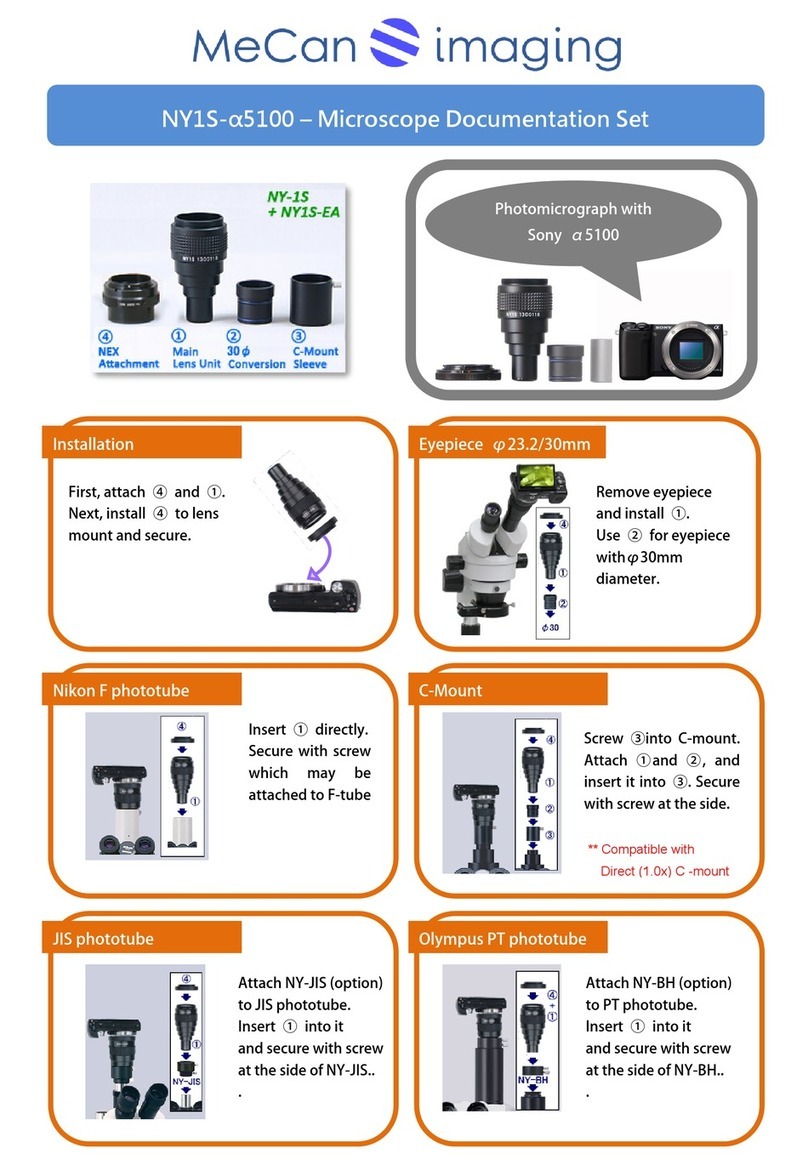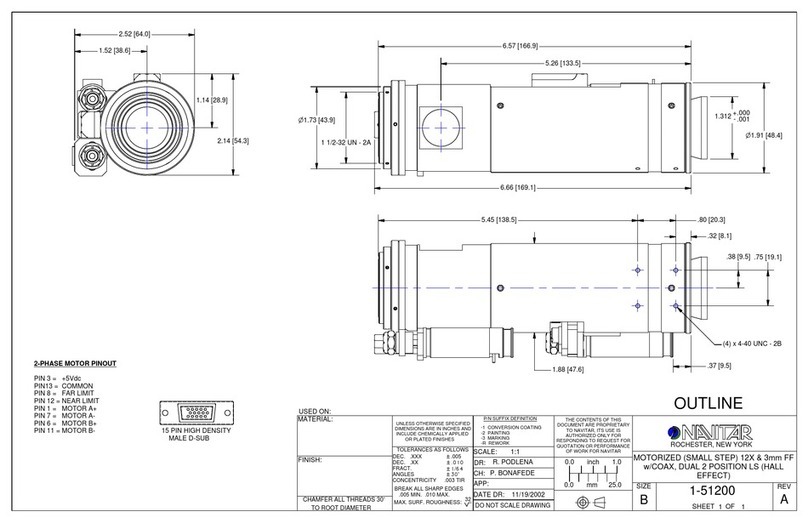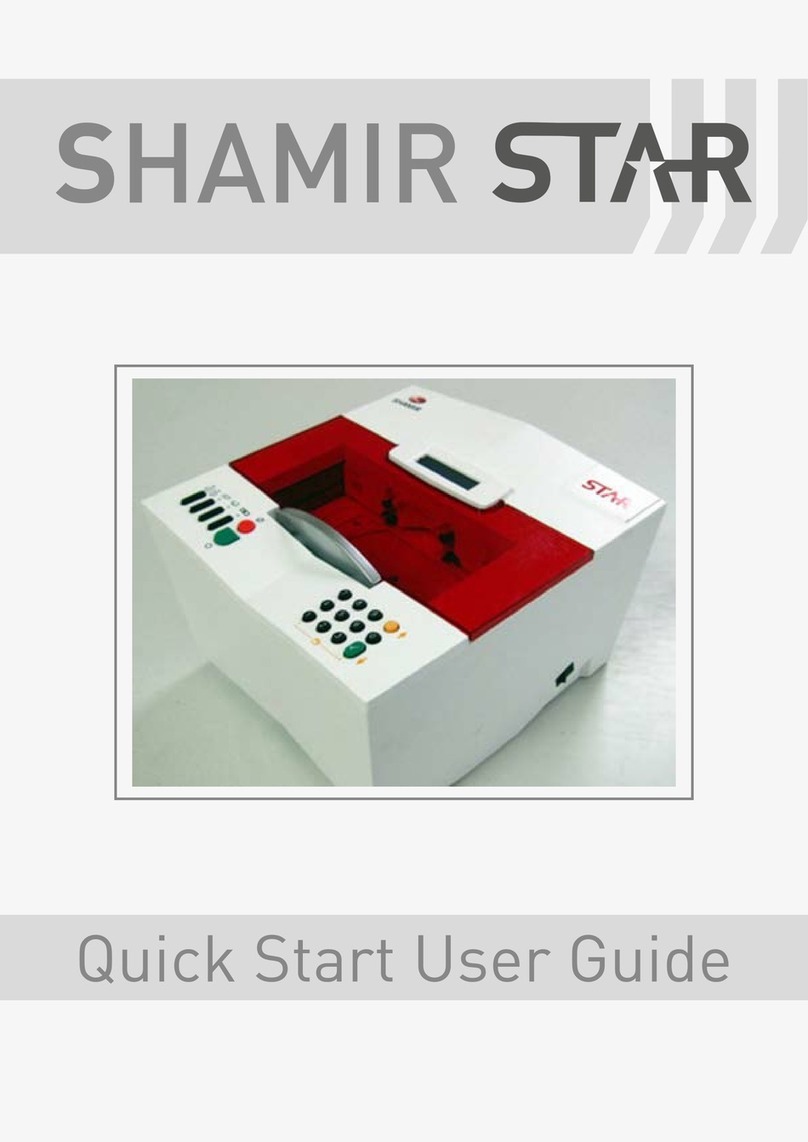
Instruction Manual
Baader CCS Herschel-Prism
Copyright Baader Planetarium GmbH, all rights reserved - 4-
1. SAFETY INSTRUCTIONS
Solar observation in white light (the Solar photosphere –Sun spots, Solar
granulation and Solar faculae) is one of the most interesting activities in as-
tronomy. However this kind of observation may be dangerous, if the device
is being handled incorrectly. Improper use may cause damage to the eye –
even complete blindness. For this reason please read these safety instruc-
tions carefully.
The Baader Safety Herschel-Prism was designed specially for Solar obser-
vation with refracting telescopes (also see below). Any commercial refractor
with an aperture ranging from 90 to 110mm (e.g. Celestron Omni-XLT se-
ries refractors) will already show all visible Solar phenomena accessible to
the Astro amateur.
The Baader Safety Herschel-Prism is a professional accessory for the seri-
ous amateur. Using it requires responsible handling.
Following precautions apply for visual observation:
-Do not use this product if you do not feel well informed about possible
hazards and the consequences of wrong handling. If you have questions, please contact us.
-Never remove the pre-mounted neutral-density filter (#2458332) 1:1000 (OD 3.0), except for eyepiece projection
photography (see pages 5-6).
-Always mount the Baader Safety Herschel-Prism onto the focuser before aiming the telescope at the Sun.
-If more than one telescope is attached to your mount, be sure that the lenses of all other optics –except for the
one utilizing the Baader Safety Herschel-Prism –are being carefully and securely covered to exclude any Solar
radiation entering unnoticed into any other telescope or finder scope pointing towards the Sun.
-Never will you leave this instrument –or any telescope –unattended during the day-time respectively during So-
lar observation, especially with inexperienced observers and/or CHILDREN.
-Children especially must be prevented from using this instrument on their own, without expert supervision! This
device is not a toy. It is not intended to be used by children under 13 years of age.
-Maximum telescope size: We have used the Herschel prism succesfully with telescopes with 6 and 8 inch aper-
ture. Because of the huge amount radiation, we recommend to point the telescope away from the sun when you
do not observe - make a break every hour or so to give the equipment time to cool down. The limiting factor for
the focal length is the 2"adaption. The image of the sun in the image plane is ca. 1cm per 1m focal length, so
focal length should not be longer than ca. 4,5m. If you can project the sun with your telescope and a 2"-
focusser, you can also use the Herschel prism.
The Baader Safety Herschel-Prism features a ceramic window which works as Solar finder screen and “heat cage“
at the same time. Due to the closed design of the magnesium prism body there is no dangerous amount of light
exiting the Baader Safety Herschel-Prism. Due to this improvement the Herschel-Prism evolves into a safe device
for Solar observation –even and especially for educational purposes.
Following precautions apply for photographic observation:
-Never remove the pre-mounted neutral-density filter (#2458332) 1:1000 (OD 3.0) for prime focus imaging (see
page 9)
-When checking focus during focal- or eyepiece projection photography, make sure that the image of the sun is
not too bright. In case the image appears too bright, use a neutral density filter (#2458245 1:64 OD=1.8) and
hold it between your eye and the camera.
1.1. Additional important advice
Never mount any filter into the front 2"nosepiece of the Baader CCS Herschel-Prism. During Solar observation
the full energy of the Sun reaches the CCS Herschel-Prism unabated. For this reason any additional filtering or
reduction of light must never happen in front of the Herschel-Prism since the heat load would be so large that
any filter mounted in this place would be shattered immediately (in the exact focus of an unfiltered 6"refractor at
f/6 to f/15 temperatures up to 600°C are being measured).

